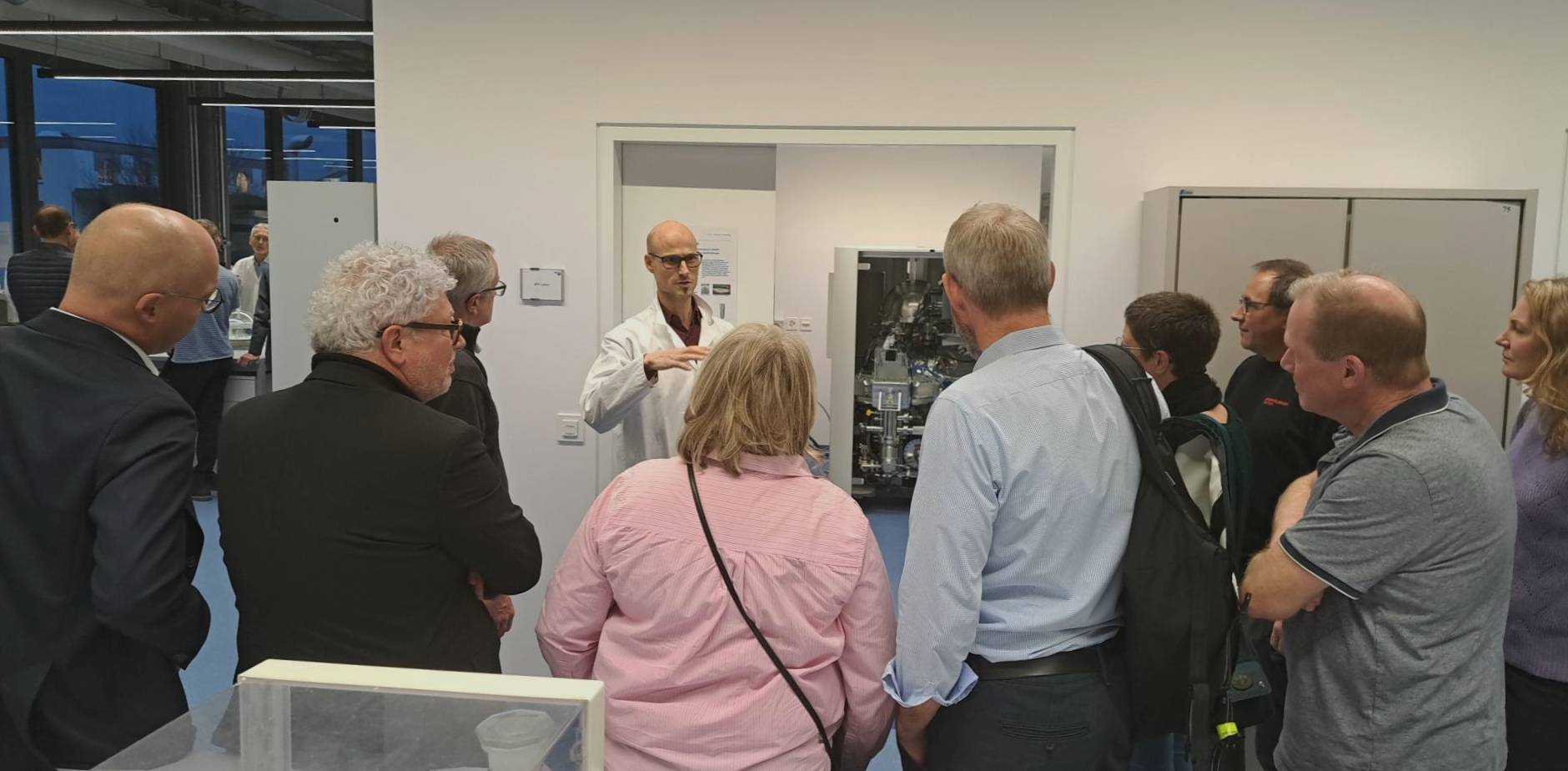IL-22: Failure analysis of implants
Failure analysis is used to determine the cause of a failure and to prevent future failures. The knowledge gained can be used for the overall risk assessment as part of the technical documentation. In addition to clarifying the cause and identifying risks and hazards, failure analysis thus provides useful information for designers, product developers and users (surgeons). In the area of post-market surveillance, failure analysis provides continuous feedback on implants on the market and can help to document high quality and high product standards.
With over 25 years of experience in the field of damage analysis of implants, the RMS Foundation is an important partner for manufacturers, users and patients as a neutral body in legal disputes.

Figure 1: Macro image of a fracture surface of a titanium rod (spinal implant). The ridge lines running in an arc are evidence of a fatigue fracture.
The first step in a failure analysis is to check whether the broken implant has sufficient marking/identification. The data on the implant is compared with the data from the production order and the corresponding acceptance test certificates. This provides an indirect check of the traceability and complete documentation of the production order. Depending on the completeness of the documentation, a decision can be made in consultation with the manufacturer as to whether a full material examination should be carried out or whether an examination of the fracture surface under a scanning electron microscope (SEM) is sufficient. First, the fractured implant and all other implants supplied are documented macroscopically using photography or light microscopy. In some cases, initial conclusions can already be drawn here about the cause of the damage. Next, the dimensions of the implants are measured and compared with the information from the manufacturer's technical drawing. Finally, a fracture surface analysis is carried out in the SEM.

Figure 2: The scanning electron micrograph shows fine vibration lines. These confirm a fatigue fracture.
Depending on the condition of the fracture surface, a statement can be made about the type of fracture, the fracture exit and the further course of the fracture. Finally, all results are summarized in a technical examination report. For a holistic picture, surgical techniques, surgical reports and X-ray images are further important information for understanding and clarifying the cause of the damage. Thanks to its many years of experience, RMS is also able to evaluate the case with regard to the position/positioning of the implant from a fracture mechanics perspective.
Our services for damage analysis:
- Fracture analysis: Break type, break initiation, break progression
- Clarification of the cause of damage
- Traceability verification
- Material verification
- Dimensional verification
- Important feedback for designers, design, material selection, risk analysis, post market surveillance
